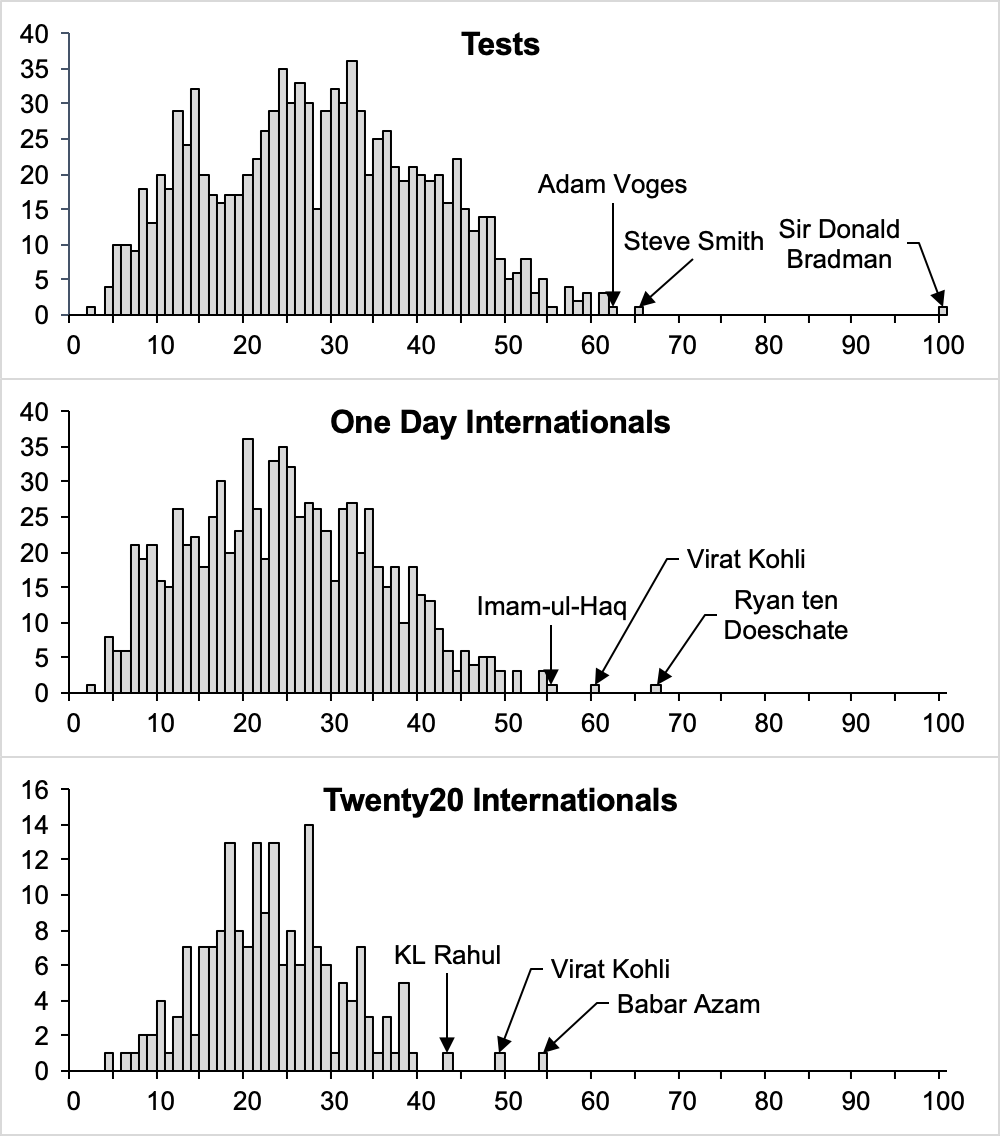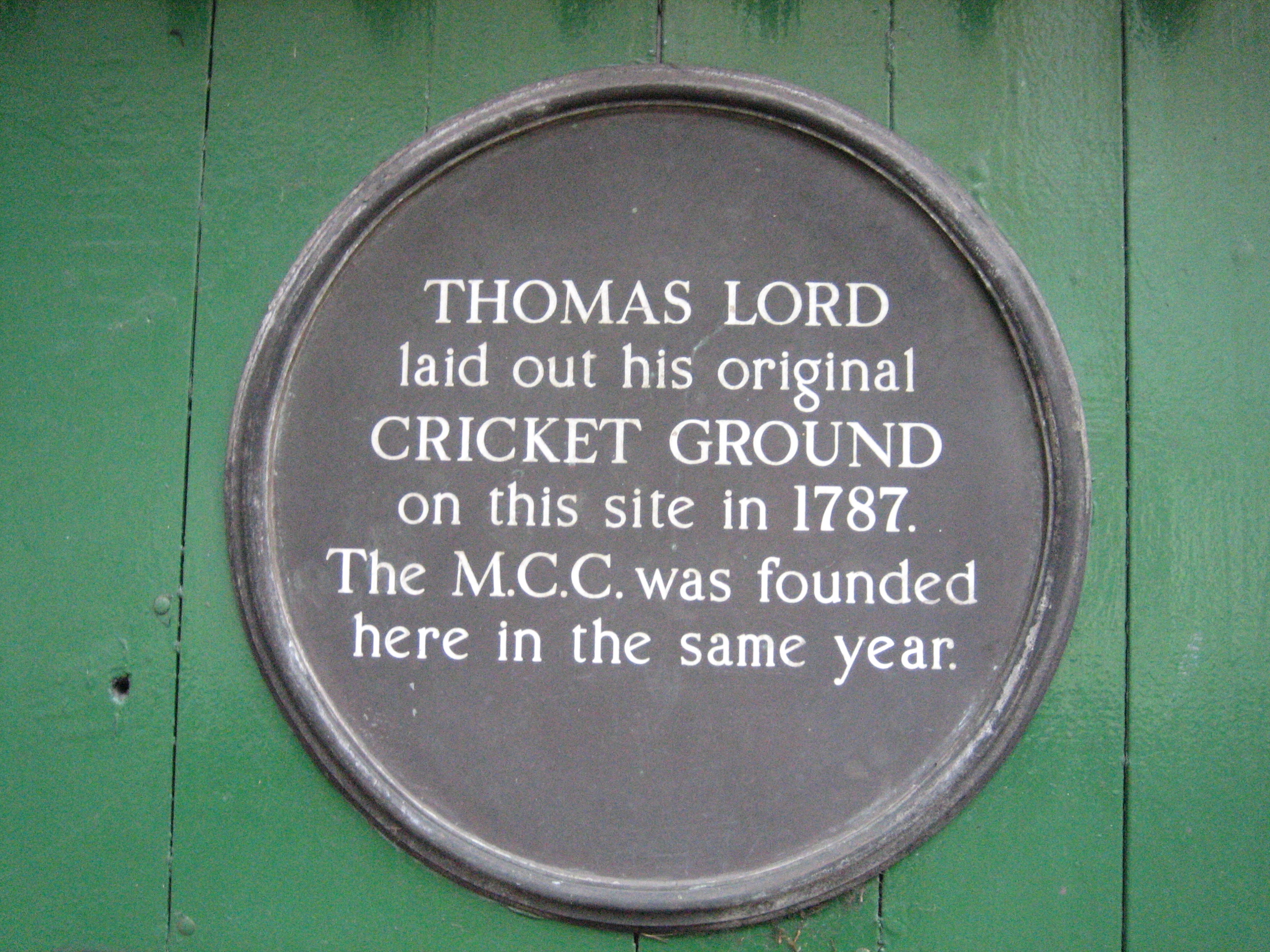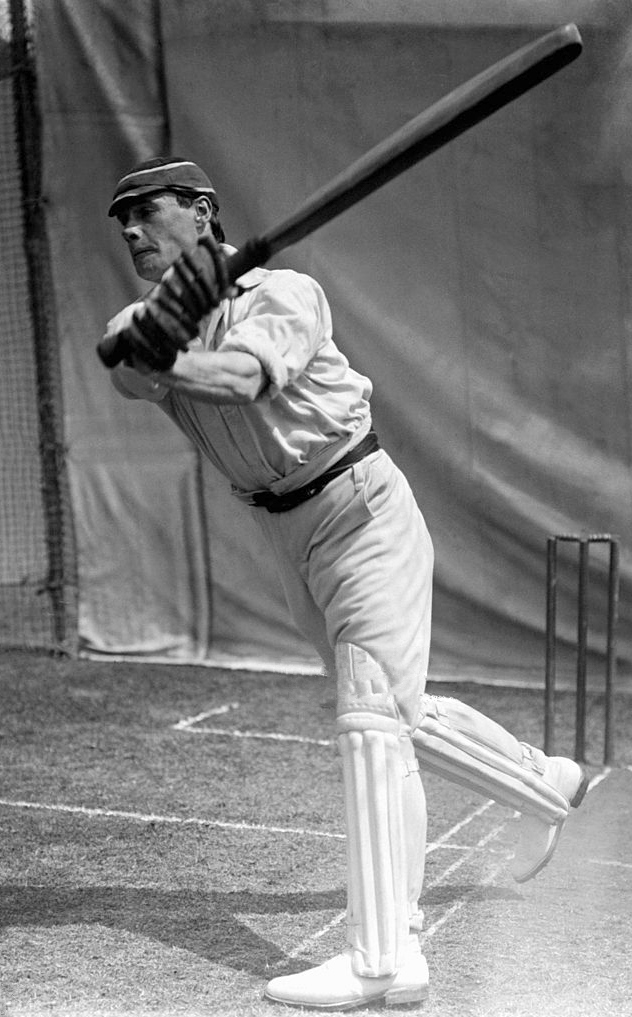|
Robert Carrick (cricketer)
Robert Black Carrick (9 June 1892 — 4 September 1945) was a Scottish first-class cricketer and an officer of the Indian Volunteers and Royal Artillery. The son of John Carrick, was born at Troon in June 1892. He was educated at Winchester College, where he played for the college cricket team. After completing his education, he travelled to British India where he served in the Madras Artillery Volunteers during the First World War, being commissioned as a second lieutenant in June 1915. He was made a temporary lieutenant in February 1917, and a temporary captain in June 1918, at which point he was serving in the Royal Artillery. Following the war, in March 1919, he relinquished his commission upon the completion of his service, at which point he was granted the full rank of captain. A member of the Madras Cricket Club, he played first-class cricket while in British India, making his debut for England against India at Bombay in December 1915. Later that month he made ... [...More Info...] [...Related Items...] OR: [Wikipedia] [Google] [Baidu] |
Troon
Troon is a town in South Ayrshire, situated on the west coast of Ayrshire in Scotland, about north of Ayr and northwest of Glasgow Prestwick Airport. Troon has a port with freight services and a yacht marina. Up until January 2016, P&O operated a seasonal ferry service to Larne. In May 2006, a ferry service to Campbeltown was added, although this was withdrawn the following year. In the 2001 census the population of Troon, not including the nearby village of Loans but including the Barassie area, was estimated at 14,766, a 4.77% increase on the 1991 estimate of 14,094. Name The name ''Troon'' is likely from a Brythonic or Pictish name cognate with Welsh ("nose, cape"). When Scottish Gaelic became the main language, it is possible that the Gaelic form (; "the nose") was used for the name Troon. Since the words ''sròn'' and ''trwyn'' are cognate, it could have been easily adapted from one language to the other. This is similar to the Gaelic name of Stranraer (''An t-Sròn ... [...More Info...] [...Related Items...] OR: [Wikipedia] [Google] [Baidu] |
First-class Cricket
First-class cricket, along with List A cricket and Twenty20 cricket, is one of the highest-standard forms of cricket. A first-class match is one of three or more days' scheduled duration between two sides of eleven players each and is officially adjudged to be worthy of the status by virtue of the standard of the competing teams. Matches must allow for the teams to play two innings each, although in practice a team might play only one innings or none at all. The etymology of "first-class cricket" is unknown, but it was used loosely before it acquired official status in 1895, following a meeting of leading English clubs. At a meeting of the Imperial Cricket Conference (ICC) in 1947, it was formally defined on a global basis. A significant omission of the ICC ruling was any attempt to define first-class cricket retrospectively. That has left historians, and especially statisticians, with the problem of how to categorise earlier matches, especially those played in Great Britain ... [...More Info...] [...Related Items...] OR: [Wikipedia] [Google] [Baidu] |
Bowling (cricket)
Bowling, in cricket, is the action of propelling the ball toward the wicket defended by a batter. A player skilled at bowling is called a ''bowler''; a bowler who is also a competent batter is known as an all-rounder. Bowling the ball is distinguished from ''throwing'' the ball by a strictly specified biomechanical definition, which restricts the angle of extension of the elbow. A single act of bowling the ball towards the batsman is called a ''ball'' or a '' delivery''. Bowlers bowl deliveries in sets of six, called an ''over''. Once a bowler has bowled an over, a teammate will bowl an over from the other end of the pitch. The Laws of Cricket govern how a ball must be bowled. If a ball is bowled illegally, an umpire will rule it a '' no-ball''. If a ball is bowled too wide of the striker for the batsman to be able to play at it with a proper cricket shot, the bowler's end umpire will rule it a '' wide''. There are different types of bowlers, from fast bowlers, whose prim ... [...More Info...] [...Related Items...] OR: [Wikipedia] [Google] [Baidu] |
Century (cricket)
In cricket, a century is a score of 100 or more runs in a single innings by a batsman. The term is also included in "century partnership" which occurs when two batsmen add 100 runs to the team total when they are batting together. A century is regarded as a landmark score for batsmen and a player's number of centuries is generally recorded in their career statistics. Scoring a century is loosely equivalent in merit to a bowler taking a five-wicket haul, and is commonly referred to as a ton or hundred. Scores of more than 200 runs are still statistically counted as a century, although these scores are referred to as double (200–299 runs), triple (300–399 runs), and quadruple centuries (400–499 runs), and so on. Accordingly, reaching 50 runs in an innings is known as a half-century; if the batsman then goes on to score a century, the half-century is succeeded in statistics by the century. Scoring a century at Lord's earns the batsman a place on the Lord's honours bo ... [...More Info...] [...Related Items...] OR: [Wikipedia] [Google] [Baidu] |
Batting Average (cricket)
In cricket, a player's batting average is the total number of runs they have scored divided by the number of times they have been out, usually given to two decimal places. Since the number of runs a player scores and how often they get out are primarily measures of their own playing ability, and largely independent of their teammates, batting average is a good metric for an individual player's skill as a batter (although the practice of drawing comparisons between players on this basis is not without criticism). The number is also simple to interpret intuitively. If all the batter's innings were completed (i.e. they were out every innings), this is the average number of runs they score per innings. If they did not complete all their innings (i.e. some innings they finished not out), this number is an estimate of the unknown average number of runs they score per innings. Each player normally has several batting averages, with a different figure calculated for each type of matc ... [...More Info...] [...Related Items...] OR: [Wikipedia] [Google] [Baidu] |
All-rounder
An all-rounder is a cricketer who regularly performs well at both batting and bowling. Although all bowlers must bat and quite a handful of batsmen do bowl occasionally, most players are skilled in only one of the two disciplines and are considered specialists. Some wicket-keepers have the skills of a specialist batter and have been referred to as all-rounders, but the term '' wicket-keeper-batter'' is more commonly applied to them, even if they are substitute wicket keepers who also bowl. Definition There is no precise qualification for a player to be considered an all-rounder and use of the term tends to be subjective. The generally accepted criterion is that a "genuine all-rounder" is someone whose batting or bowling skills, considered alone, would be good enough to win him/her a place in the team. Another definition of a "genuine all-rounder" is a player who can through both batting and bowling (though not necessarily both in the same match), consistently "win matches for ... [...More Info...] [...Related Items...] OR: [Wikipedia] [Google] [Baidu] |
Marylebone Cricket Club
Marylebone Cricket Club (MCC) is a cricket club founded in 1787 and based since 1814 at Lord's Cricket Ground, which it owns, in St John's Wood, London. The club was formerly the governing body of cricket retaining considerable global influence. In 1788, the MCC took responsibility for the laws of cricket, issuing a revised version that year. Changes to these Laws are now determined by the International Cricket Council (ICC), but the copyright is still owned by MCC. When the ICC was established in 1909, it was administered by the secretary of the MCC, and the president of MCC automatically assumed the chairmanship of ICC until 1989. For much of the 20th century, commencing with the 1903–04 tour of Australia and ending with the 1976–77 tour of India, MCC organised international tours on behalf of the England cricket team for playing Test matches. On these tours, the England team played under the auspices of MCC in non-international matches. In 1993, its administrativ ... [...More Info...] [...Related Items...] OR: [Wikipedia] [Google] [Baidu] |
Humphrey Ward
Humphrey Plowden "H.P." Ward (20 January 1899 – 16 December 1946) was an English amateur first-class cricketer, who played for Oxford University (1919–1921), Europeans (India) (1921/22–1945/46), Madras (1926/27–1938/39), H. D. G. Leveson Gower's XI (1931), Indian XI (1933/34) and the Madras Governor's XI (1941/42) and in one match for Yorkshire County Cricket Club in 1920. He also played for the Yorkshire Second XI in 1920, and for the Marylebone Cricket Club (MCC) from 1931 to 1935. He won an Oxford Blue for cricket from 1919 to 1921 and also played football for Oxford. He was a member of the Great Britain football squad at the 1920 Summer Olympics but did not feature in the competition. Ward graduated from Oxford in 1921 and joined the Indian Forest Service. On moving to Madras in 1921, he joined the Europeans cricket team and played for the team against Indians in the Madras Presidency Matches. He holds the record for the highest run aggregate in the Madras Presiden ... [...More Info...] [...Related Items...] OR: [Wikipedia] [Google] [Baidu] |
Alexander Penfold
Alexander George Penfold (14 May 1901 – 28 September 1982) was an English first-class cricketer active 1924–30 who played for Surrey Surrey () is a ceremonial and non-metropolitan county in South East England, bordering Greater London to the south west. Surrey has a large rural area, and several significant urban areas which form part of the Greater London Built-up Area. .... He was born in Kenley; died in Isfield. References 1901 births 1982 deaths English cricketers Surrey cricketers Tamil Nadu cricketers Europeans cricketers Cricketers from the London Borough of Croydon People from Isfield {{England-cricket-bio-1900s-stub ... [...More Info...] [...Related Items...] OR: [Wikipedia] [Google] [Baidu] |
Tamil Nadu Cricket Team
The Tamil Nadu cricket team is a domestic cricket team run by Tamil Nadu Cricket Association representing the state of Tamil Nadu, India.It has been one of the most dominating teams in white ball cricket in domestic circuit The team plays in Ranji Trophy, the top tier of the domestic first-class cricket tournament in India and in List A tournaments Vijay Hazare Trophy and Syed Mushtaq Ali Trophy. They have won the Ranji Trophy twice and have finished runners-up nine times. They are the team that has won the Vijay Hazare Trophy and Syed Mushtaq Ali Trophy most often. They were the first team to win the Syed Mushtaq Ali Trophy. The team was known as Madras until the 1970–71 season before renaming of Madras state to Tamil Nadu. Tamil Nadu is the only team to win the five different Indian domestic trophies (Ranji Trophy, Irani Trophy, Syed Mushtaq Ali Trophy, Vijay Hazare Trophy and Deodhar Trophy) in India. Home ground The team is based at the M. A. Chidambaram Stadium, n ... [...More Info...] [...Related Items...] OR: [Wikipedia] [Google] [Baidu] |
Gilbert Jessop
Gilbert Laird Jessop (19 May 1874 – 11 May 1955) was an English cricket player, often reckoned to have been the fastest run-scorer cricket has ever known. He was Wisden Cricketer of the Year for 1898. Career Jessop was born in Cheltenham, Gloucestershire. Nicknamed "The Croucher" because of his unusual hunched stance at the crease and though a stocky build at 5'7" and 11 stone, he remained a fast bowler through his career. He was also a powerful driver, cutter and hooker. The Fifth Test at The Oval in August 1902, known as "Jessop's match", highlighted Jessop's ability to play quickly. England had an unlikely one-wicket victory against a quality Australian side who set England 263 to win in the fourth innings. Jessop came to the crease with England at 48 for 5. He scored his first 50 runs in 43 minutes and reached his century in 75 minutes. He was eventually dismissed after 77 minutes for 104, which included 17 fours and an all-run five. Many of the fours had well cleared th ... [...More Info...] [...Related Items...] OR: [Wikipedia] [Google] [Baidu] |
Madras Presidency Matches
The Madras Presidency Matches were annual first-class cricket matches played in Madras (now Chennai) from the 1915–16 season to 1951–52 between the cricket teams of Indians and the Europeans (i.e., Europeans who were living in India). The matches were played in the Chepauk Grounds (the present M. A. Chidambaram Stadium ) usually in mid-January around the time of Pongal festival. They were sometimes called the Pongal Matches because of this. Of the 33 matches played, Indians won 15 and the Europeans 8 with 10 draws. Background The Europeans v Indians matches were the idea of Buchi Babu Naidu of the Madras United Club (MUC) and Percival Partridge of the Madras Cricket Club (MCC). The MCC, at the time, was an exclusively white organisation and the MUC was founded by Buchi Babu as a similar cricket club for the Indians. Shortly before the first match Buchi Babu, who was to captain the Indian side, died of a heart attack. The match still went ahead, mainly because of the effort ... [...More Info...] [...Related Items...] OR: [Wikipedia] [Google] [Baidu] |





